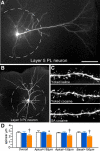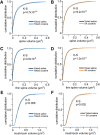The Contingency of Cocaine Administration Accounts for Structural and Functional Medial Prefrontal Deficits and Increased Adrenocortical Activation
- PMID: 26311772
- PMCID: PMC4549401
- DOI: 10.1523/JNEUROSCI.4961-14.2015
The Contingency of Cocaine Administration Accounts for Structural and Functional Medial Prefrontal Deficits and Increased Adrenocortical Activation
Erratum in
- J Neurosci. 2015 Dec 2;35(48):16012
Abstract
The prelimbic region (PL) of the medial prefrontal cortex (mPFC) is implicated in the relapse of drug-seeking behavior. Optimal mPFC functioning relies on synaptic connections involving dendritic spines in pyramidal neurons, whereas prefrontal dysfunction resulting from elevated glucocorticoids, stress, aging, and mental illness are each linked to decreased apical dendritic branching and spine density in pyramidal neurons in these cortical fields. The fact that cocaine use induces activation of the stress-responsive hypothalamo-pituitary-adrenal axis raises the possibility that cocaine-related impairments in mPFC functioning may be manifested by similar changes in neuronal architecture in mPFC. Nevertheless, previous studies have generally identified increases, rather than decreases, in structural plasticity in mPFC after cocaine self-administration. Here, we use 3D imaging and analysis of dendritic spine morphometry to show that chronic cocaine self-administration leads to mild decreases of apical dendritic branching, prominent dendritic spine attrition in PL pyramidal neurons, and working memory deficits. Importantly, these impairments were largely accounted for in groups of rats that self-administered cocaine compared with yoked-cocaine- and saline-matched counterparts. Follow-up experiments failed to demonstrate any effects of either experimenter-administered cocaine or food self-administration on structural alterations in PL neurons. Finally, we verified that the cocaine self-administration group was distinguished by more protracted increases in adrenocortical activity compared with yoked-cocaine- and saline-matched controls. These studies suggest a mechanism whereby increased adrenocortical activity resulting from chronic cocaine self-administration may contribute to regressive prefrontal structural and functional plasticity.
Significance statement: Stress, aging, and mental illness are each linked to decreased prefrontal plasticity. Here, we show that chronic cocaine self-administration in rats leads to decrements in medial prefrontal structural and functional plasticity. Notably, these impairments were largely accounted for in rats that self-administered cocaine compared with yoked counterparts. Moreover, we verified previous reports showing that adrenocortical output is augmented by cocaine administration and is more protracted in rats that were permitted to receive the drug contingently instead of passively. These studies suggest that increased adrenocortical activity resulting from cocaine self-administration may contribute to regressive prefrontal structural and functional plasticity.
Keywords: HPA; corticosterone; dendritic spine; prelimbic; self-administration; working memory.
Copyright © 2015 the authors 0270-6474/15/3511897-14$15.00/0.
Figures











Similar articles
-
Adrenocortical status predicts the degree of age-related deficits in prefrontal structural plasticity and working memory.J Neurosci. 2014 Jun 18;34(25):8387-97. doi: 10.1523/JNEUROSCI.1385-14.2014. J Neurosci. 2014. PMID: 24948795 Free PMC article.
-
Prolonged corticosterone exposure induces dendritic spine remodeling and attrition in the rat medial prefrontal cortex.J Comp Neurol. 2016 Dec 15;524(18):3729-3746. doi: 10.1002/cne.24027. Epub 2016 May 17. J Comp Neurol. 2016. PMID: 27113541 Free PMC article.
-
Reversal of Cocaine-Associated Synaptic Plasticity in Medial Prefrontal Cortex Parallels Elimination of Memory Retrieval.Neuropsychopharmacology. 2017 Sep;42(10):2000-2010. doi: 10.1038/npp.2017.90. Epub 2017 May 3. Neuropsychopharmacology. 2017. PMID: 28466871 Free PMC article.
-
Stress-induced alterations in prefrontal dendritic spines: Implications for post-traumatic stress disorder.Neurosci Lett. 2015 Aug 5;601:41-5. doi: 10.1016/j.neulet.2014.12.035. Epub 2014 Dec 18. Neurosci Lett. 2015. PMID: 25529195 Review.
-
Learning-induced intrinsic and synaptic plasticity in the rodent medial prefrontal cortex.Neurobiol Learn Mem. 2020 Mar;169:107117. doi: 10.1016/j.nlm.2019.107117. Epub 2019 Nov 23. Neurobiol Learn Mem. 2020. PMID: 31765801 Free PMC article. Review.
Cited by
-
Overexpression of ASIC1A in the nucleus accumbens of rats potentiates cocaine-seeking behavior.Addict Biol. 2020 Mar;25(2):e12690. doi: 10.1111/adb.12690. Epub 2018 Nov 6. Addict Biol. 2020. PMID: 30397978 Free PMC article.
-
Cocaine and habit training cause dendritic spine rearrangement in the prelimbic cortex.iScience. 2023 Feb 20;26(4):106240. doi: 10.1016/j.isci.2023.106240. eCollection 2023 Apr 21. iScience. 2023. PMID: 37153443 Free PMC article.
-
Contributions of prolonged contingent and non-contingent cocaine exposure to escalation of cocaine intake and glutamatergic gene expression.Psychopharmacology (Berl). 2018 May;235(5):1347-1359. doi: 10.1007/s00213-017-4798-z. Epub 2017 Dec 12. Psychopharmacology (Berl). 2018. PMID: 29234834 Free PMC article.
-
The stressed orbitofrontal cortex.Behav Neurosci. 2021 Apr;135(2):202-209. doi: 10.1037/bne0000456. Epub 2021 Mar 25. Behav Neurosci. 2021. PMID: 33764079 Free PMC article.
-
Chronic restraint stress during withdrawal increases vulnerability to drug priming-induced cocaine seeking via a dopamine D1-like receptor-mediated mechanism.Drug Alcohol Depend. 2018 Jun 1;187:327-334. doi: 10.1016/j.drugalcdep.2018.03.024. Epub 2018 Apr 22. Drug Alcohol Depend. 2018. PMID: 29705546 Free PMC article.
References
-
- Broadbear JH, Winger G, Cicero TJ, Woods JH. Effects of response contingent and noncontingent cocaine injection on hypothalamic-pituitary-adrenal activity in rhesus monkeys. J Pharmacol Exp Ther. 1999;290:393–402. - PubMed
Publication types
MeSH terms
Substances
Grants and funding
LinkOut - more resources
Full Text Sources
Other Literature Sources
Miscellaneous
